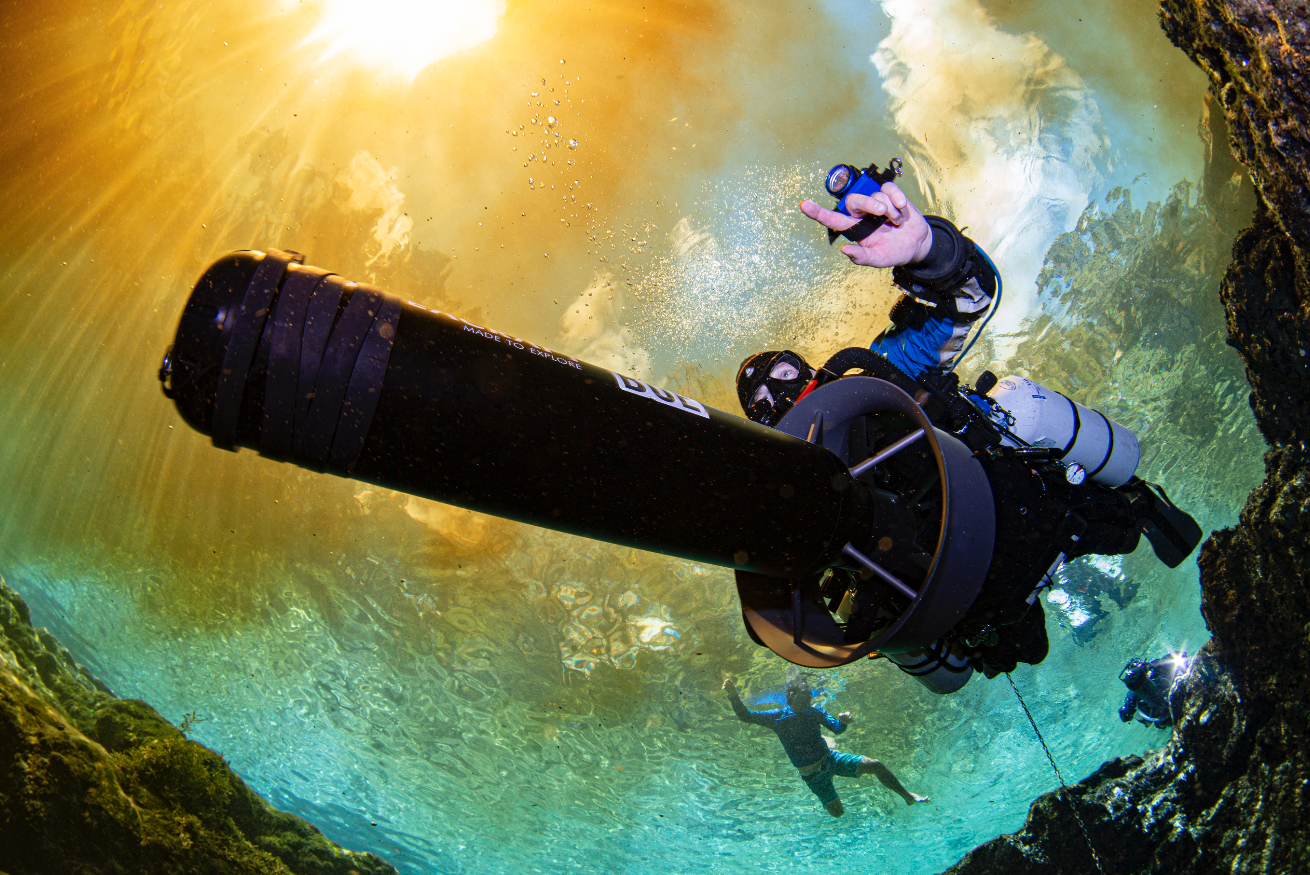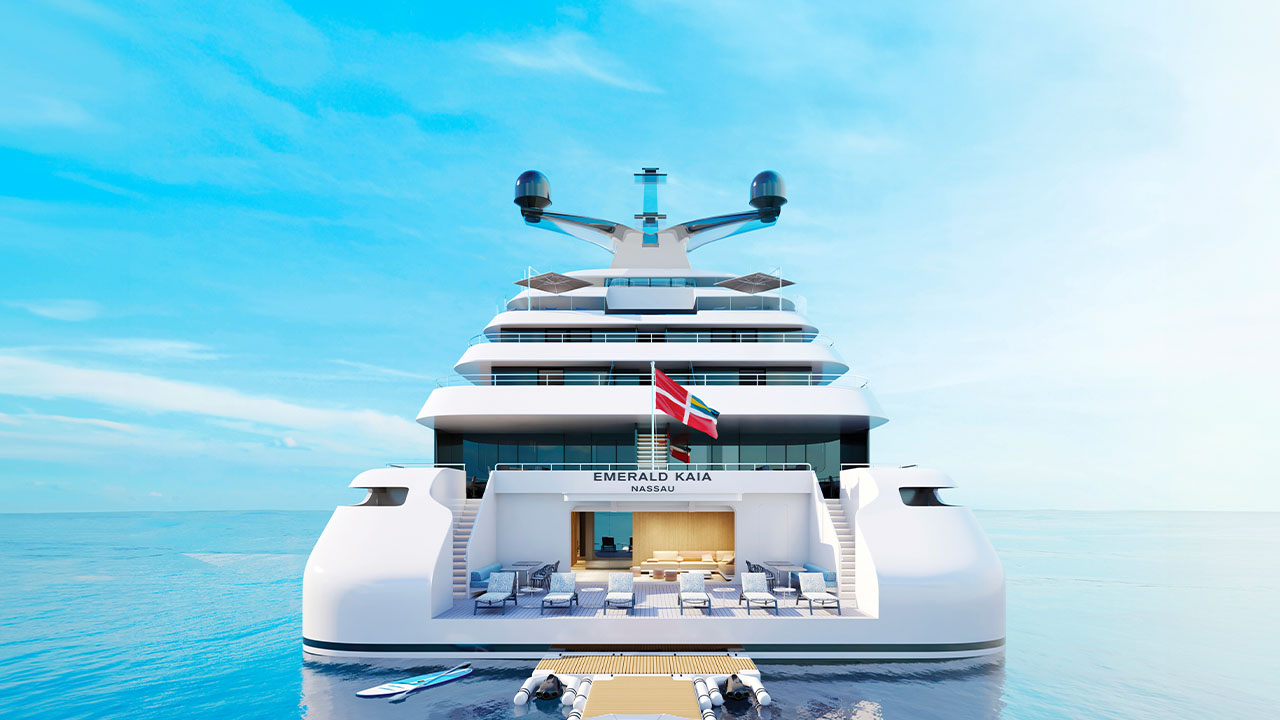
As president of the South Florida Underwater Photography Society, Lureen Ferretti understands that nothing comes easy when capturing moments below sea level.
In addition to being an above-average diver, she explains the importance of buoyancy control to steady yourself against currents, of having constant awareness of your surroundings, and of knowing your camera and lighting so well that you can quickly adjust settings based on an ever-changing underwater environment.
Of course, it also helps to maintain focus. Especially in the dark.
“Once, I was doing a night dive on a friend’s boat,” says the Pompano Beach resident. “He typically anchors on a shipwreck, and then we follow a line to the wreck. On this night, I was fiddling around with the arms on my strobe so that I’d be in position to shoot as soon as we reached the ship. I wasn’t hanging onto the line, but I was watching it. Or I thought I was.
“I must have been fiddling around with the strobe too long, and I lost visual contact with the line. When I got to the bottom, I couldn’t find the wreck. By the time I surfaced, I was so far away from the boat that I couldn’t swim back. And they couldn’t see me, even though I was shining my strobe lights. So, I started swimming in. Luckily, I came across a small fishing boat. They picked me up and took me back to my friend’s boat.
“I could see land, but that would’ve been a long swim. And a very long night.”
Brushes with danger aside—and, like many longtime divers, she’s had a few—Ferretti has no reservations about jumping into the deep end with her Canon 70D.
The New Jersey native (she grew up in Pittsgrove Township) moved to South Florida in 1995 having already earned her scuba certification. But it wasn’t until 15 years ago that Ferretti added photography to her underwater hobby.
At first, she snapped pictures out of necessity in her volunteer role with the Reef Environmental Education Foundation. Ferretti took “proof-of-life” shots to accompany the fish identification work she did for the foundation; such surveys include charting the conditions and various fish species at a given dive site, thus allowing marine experts to monitor the ongoing health of a reef.
As she met more people who enjoyed underwater photography, Ferretti realized that her proof-of-life photos weren’t as crisp and well-lit as the ones shot by her peers. So, she invested in one strobe. Then, another. Soon, she was hooked. Before long, Ferretti was planning her travels around diving and photography; she’s taken deep-sea images in French Polynesia, Indonesia, the Maldives, the Philippines and Mexico.
“It’s the only real form of stress relief,” says the award-winning photographer, who, by day, is an implementation project manager for Oracle NetSuite. “When you think about our jobs, we can’t get away from technology. We can’t get away from the phone, we can’t get away from email. Diving is really my escape.”
Lifestyle asked Ferretti—whose work illustrates both the beauty and fragility of our marine environment—to share some of her favorite images from dives in Florida waters.
As evidenced by the following images, her escape is the gift that keeps on giving—and educating.
Swimming with Sharks
“Diving and photography has allowed me to see the true nature of sharks,” Ferretti says. “I did a dive where there were 50 to 60 lemon sharks all around. They weren’t aggressive; they were just curious. If you don’t have a bleeding, flailing fish in the water, sharks are very calm. … And they’re majestic, especially tiger sharks, which are my favorites. They’ll swim in slowly, but they’re docile. There are many times, while we’re taking pictures, that they get so close that we have to put our hand on the top of their head and redirect them away from us.”
Preserving Our Reefs
“In Florida, there are three reefs that run parallel to the coast. The reef systems are extremely valuable to humans, including as a food source,” Ferretti says. “They also absorb much of the storm surges that occur underwater during [powerful weather events]. If we damage those reefs, that’s removing natural barriers of protection. … Unfortunately, the ocean is used as a dumping ground. People want to get rid of something, they throw it in the ocean. Like tires. We once [found] thousands of tires that were tied together and dumped in the ocean; whatever they tied them with came loose. The tires would roll around on the reef and destroy [parts of] it.”
Head in the Sand
“Most people love to go to the beach, and they think that they’re doing something good by voting for beach renourishment projects,” Ferretti says.“There’s nothing renourishing about these projects. The sand that’s dumped silts up and covers at least the first reef system and part of the second. It’s basically killing the habitat for juvenile fish.”
Nature’s Call
“People think that sharks are scary. Or that diving is scary. To me, it’s not. Nature is as things are intended to be. Sharks are prehistoric. They’re interested in eating and mating. They’re very simple to figure out. With people, you don’t know what motivates them. In many ways, people are scarier to me than nature.”











